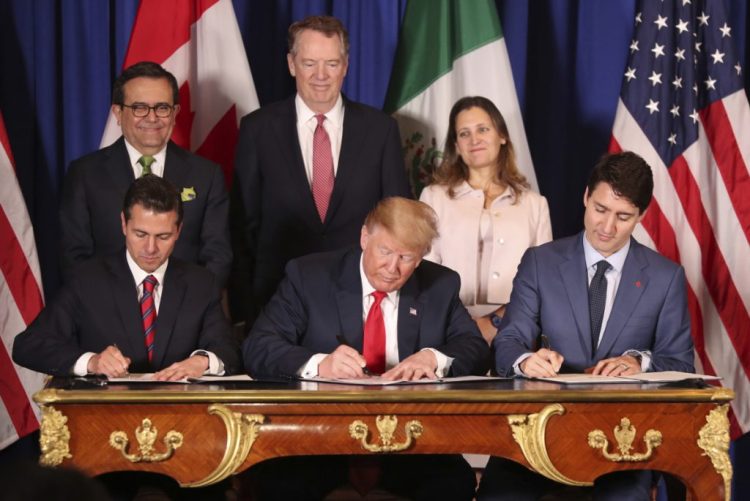The new version of the U.S.-Mexico-Canada Agreement is better than the one President Trump originally negotiated a year ago. House Democrats and the Trump administration announced a number of changes last week that will make the agreement more enforceable, likely assuring its passage through Congress.
Once approved, the agreement will replace the 25-year-old North American Free Trade Agreement, a landmark deal that aimed to boost growth by leveling barriers to trade within the continent. And while NAFTA did that, its benefits in the U.S. were offset in part by the movement of thousands of manufacturing jobs to Mexico.
NAFTA was overdue for an update that would hold Mexico to higher standards while also acknowledging the rise in online commerce. The original deal Trump struck does those things, and the changes negotiated with Democrats improves on them.
The mere fact that the Trump administration was able to strike a deal with Democrats in the middle of the Democrats’ efforts to impeach the president is proof of Washington’s ability to compartmentalize. And both sides had a clear incentive to get a deal done: Trump had promised during the 2016 campaign to end NAFTA as we know it, and House Democrats have come under withering fire from Republicans for allegedly focusing on impeachment to the exclusion of any other work. Although that wasn’t true — later this week, for example, the House is expected to pass a major bill to lower prescription drug costs and expand Medicare benefits — the new trade deal offered the chance to produce something tangible that wasn’t likely to die in the Senate.
One of the main wins for the United States in the trade deals is the pressure they place on our trading partners to raise their wages, working conditions, labor organizing rights, emissions regulations and other commercial and industrial standards closer to U.S. levels. That’s to the Democrats’ credit.
On the other hand, the new version would still impose significantly tougher requirements on all automotive manufacturers in the region. The mandate will cost consumers, automotive industry workers or both, and it imposes inefficiencies that automakers may seek to avoid simply by moving car production elsewhere.
Happily, most of the provisions in the new agreement are copied either from the 1994 NAFTA deal or from the Trans-Pacific Partnership that Trump renounced after taking office, so on balance it should promote trade.
Editorial by the Los Angeles Times
Visit the Los Angeles Times at www.latimes.com
Distributed by Tribune Content Agency, LLC.
Comments are not available on this story.
Send questions/comments to the editors.


